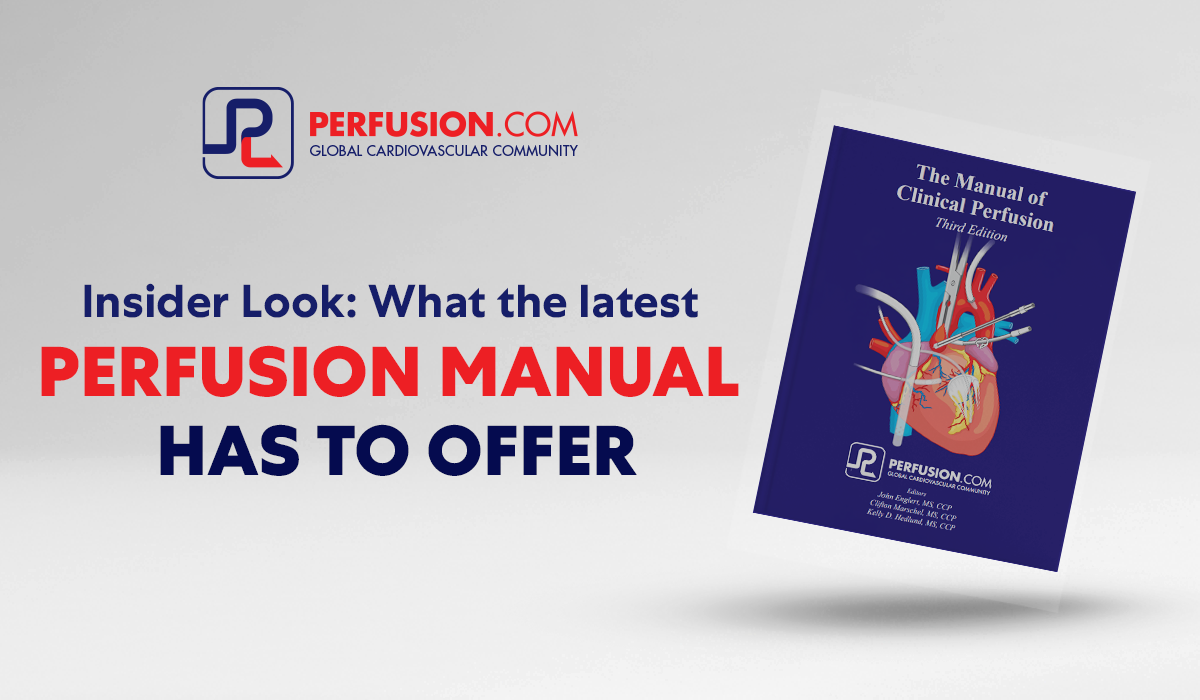Insider Look: What the Latest Perfusion Manual Has to Offer

World's Largest Resource for Cardiovascular Perfusion

For most perfusionists, The Manual of Clinical Perfusion is the ultimate reference guide, helping them acquire up-to-date knowledge and practical skills vital to the clinical perfusionist role. With the 3rd Edition now available, perfusionists can expect some exciting improvements, such as updated procedures and the incorporation of the newest technologies in the perfusion profession.
The biggest critique the editors had of the previous version of the manual was that it was too text-heavy. To address this, several key changes were made to ensure the manual serves as a quick reference for perfusionists. Here are the main updates:
With the latest edition now available, Perfusion.com interviewed Ruggero Bruzzone, a student editor of the Perfusion Manual, for an inside look at the editing process. As a new graduate, Ruggero has a promising future as a perfusionist. He has gained deep insights into the crucial trust between a perfusionist and a surgeon, and its impact on patient outcomes. A highlight of his academic journey was contributing to the Perfusion Manual update along with his classmates and fellow perfusion school students, who were tasked with editing several of the chapters of the manual’s latest edition.
Including students in the editing process of the Perfusion Manual was a deliberate decision to ensure the future of the profession was well-represented. For many students, the manual serves as a comprehensive guide to the perfusion profession. Even before starting perfusion school, Ruggero Bruzzone had used the manual to learn more about the field he was considering.
Ruggero’s understanding of perfusion deepened significantly through his involvement in the editing process. This experience not only solidified his foundation as a perfusionist but also served as a valuable bridge to the clinical world. The opportunity to contribute to the manual gave Ruggero practical insights and confidence as he transitioned into his professional career.
This intentional inclusion of students ensures that the Perfusion Manual remains relevant and forward-thinking, reflecting the evolving landscape of perfusion through the perspectives of future practitioners.
The latest edition of the Perfusion Manual reflects a significant evolution in content and usability. With streamlined sections, enhanced visuals, and updated procedures, this edition ensures that perfusionists have a comprehensive yet easily navigable resource at their fingertips. As the manual continues to serve as a cornerstone for perfusionists, its latest iteration stands as a testament to the dedication and vision of those committed to advancing patient care and professional excellence.
Perfusion.com would like to thank all the editors who contributed their time to make the 3rd Edition of the Perfusion Manual such a success. Your insights and perspectives have been integral in the creation of a more comprehensive and value-adding Manual of Clinical Perfusion.
 Ruggero first started his career as a pediatric respiratory therapist before transitioning into ECMO. For about seven years, he worked as an ECMO specialist for pediatrics and adults. It was through his work as an ECMO specialist that he learned about perfusion and gained an interest in the profession. Ruggero has just recently graduated and is excited to go right into work and start his career as a perfusionist.
Ruggero first started his career as a pediatric respiratory therapist before transitioning into ECMO. For about seven years, he worked as an ECMO specialist for pediatrics and adults. It was through his work as an ECMO specialist that he learned about perfusion and gained an interest in the profession. Ruggero has just recently graduated and is excited to go right into work and start his career as a perfusionist.
A standardized postoperative debrief tracking system is highly beneficial in identifying and reducing overall operative delays and improving operating room utilization.
NEW ORLEANS, LA — November 15, 2000 — In one of the largest studies to date, researchers have shown that transmyocardial revascularization, […]